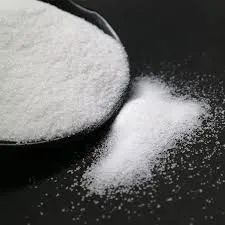Chemicals Used in ETP Plants A Comprehensive Overview
Effluent Treatment Plants (ETP) play a crucial role in managing industrial wastewater. These facilities are designed to treat effluent before it is discharged into the environment, ensuring compliance with environmental regulations and minimizing ecological impacts. A significant aspect of ETP operation involves the use of various chemicals, which are essential for the efficient removal of contaminants from wastewater. This article delves into the primary chemicals utilized in ETPs, their functionalities, and the considerations regarding their use.
1. Coagulants
Coagulation is often the first step in the treatment process. The primary goal is to aggregate suspended particles into larger particles (flocs) that can be easily removed. Common coagulants include alum (aluminum sulfate), ferric chloride, and polyaluminum chloride. These chemicals work by neutralizing the charge of suspended particles, facilitating their aggregation and subsequent sedimentation. The choice of coagulant depends on the nature of the wastewater and the specific contaminants present.
2. Flocculants
Following coagulation, flocculants are introduced to further enhance the aggregation of flocs. These are typically long-chain polymers, such as polyacrylamide, that promote the binding of smaller particles into larger clusters. Flocculants are particularly effective in treating wastewater with a high concentration of fine particles, which may not settle effectively without assistance. The use of flocculants improves the efficiency of sedimentation processes and enhances the overall performance of the ETP.
3. pH Adjusters
The pH level of wastewater can significantly affect the performance of coagulation and flocculation processes. Chemicals such as hydrochloric acid (HCl) or sodium hydroxide (NaOH) are used to adjust the pH of the wastewater to optimal levels. Maintaining an appropriate pH is essential, as it influences the solubility of certain contaminants and the effectiveness of coagulants and flocculants.
chemical used in etp plant

4. Disinfectants
Once the wastewater has been treated to remove suspended solids and impurities, disinfection becomes crucial to eliminate pathogenic microorganisms. Common disinfectants used in ETPs include chlorine, chlorination compounds, ozone, and ultraviolet (UV) light. Each disinfectant has its advantages and disadvantages; for instance, chlorine is effective and cost-efficient, but its use raises concerns about the formation of harmful by-products. Conversely, UV disinfection is chemical-free but may require more extensive infrastructure.
5. Defoamers
Foaming can hinder the treatment process by disrupting sedimentation and filtration operations. Defoamers are added to tackle this issue, especially in processes involving biological treatment. Silicone-based or non-silicone-based defoamers are commonly used in ETPs to reduce foam formation and enhance the efficiency of the treatment processes.
6. Nutrients
In biological treatment systems, nutrients such as nitrogen and phosphorus are often added to support the growth of microorganisms responsible for breaking down organic matter. Common sources of nitrogen include ammonium sulfate, while phosphorus can be supplied through phosphoric acid or potassium phosphate. Careful balancing of these nutrients is vital, as both deficiencies and excesses can adversely affect the biological treatment process.
Conclusion
The effective operation of Effluent Treatment Plants relies heavily on the appropriate use of chemicals tailored to the specific characteristics of the wastewater being treated. Understanding the role of various chemicals—from coagulants and flocculants to disinfectants and nutrient additives—is essential for optimizing treatment processes and achieving discharge standards. As regulations become more stringent and environmental concerns grow, ongoing research and development will play a vital role in improving the effectiveness and sustainability of chemical usage in ETPs. Industry professionals must remain informed of advancements in chemical treatment technologies to ensure that ETPs operate efficiently and responsibly, safeguarding water resources for future generations.

